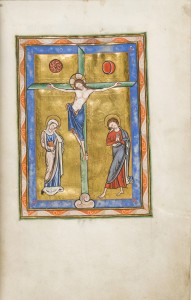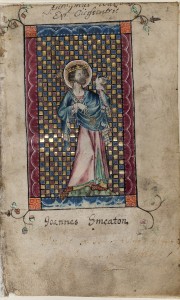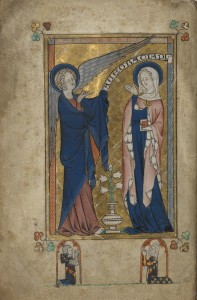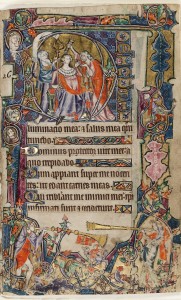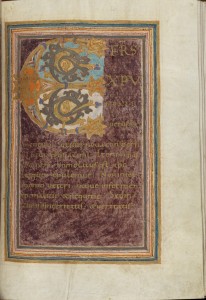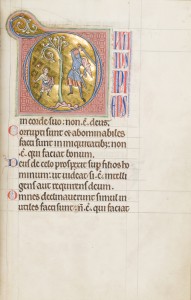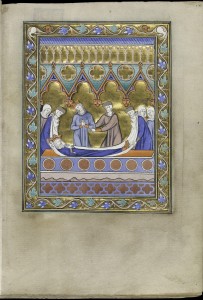Red colourants extracted from plants and animals have long been used to dye cloth and leather and to provide pink and purple hues in manuscript illuminations.
Organic colourants can be painted directly as a dye, or further processed and precipitated onto an inorganic substrate to form a 'lake' pigment that can be stored for later use.
The most common plant-based red dyes were madder, harvested from the root of Rubia tinctorum, and shredded Brazil wood from Caesalpinia echinata. Orchil, extracted from lichens such as Roccella tinctoria, was used both to imitate and replace mollusc purples, although its fugitivity in light arguably makes it a lacklustre substitute. Folium, obtained from the pH-sensitive plant turnsole (Chrozophora tinctoria), yields a number of hues ranging from red, through purple, to blue, depending on its preparation.
Insect-based colourants, with their sensitivity to acid and alkali, had the potential to yield a wide range of colours from deep red through to violet purple. The most precious insect pink, Kermes was the main source of insect colour in Europe prior to the 1520s. Also known as Polish cochineal, it was swiftly sidelined when cochineal from the Americas took over as the preferred insect dye for both textiles and manuscript illumination. Lac, a resinous secretion from scale insects of the family Coccoidea, was collected across Asia. It could be stored or traded with ease, either in its raw resinous state on twigs, or on fabric saturated with the dye known as clothlets.
The mollusc purples, derived from sea snails of the family Muricidae, including the genus Murex and Purpura, are commonly known from the textile industry at Tyre that gave them their name. Also known as Royal, Imperial, or Byzantine purple, Tyrian purple was famed for its value and light-fastness, but has been identified infrequently in manuscripts.
